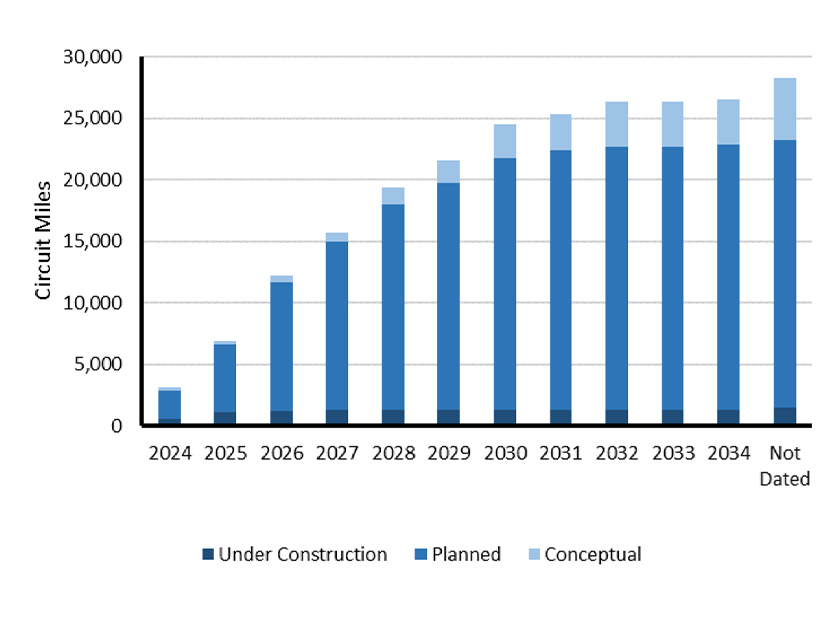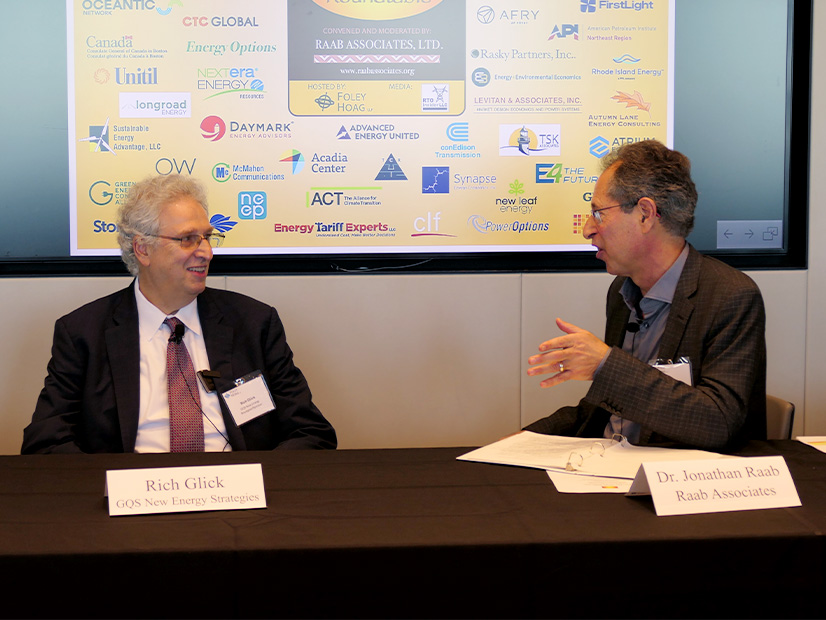In its 2024 Long-Term Reliability Assessment (LTRA) published Dec. 17, NERC warned that large parts of the North American grid face “mounting resource adequacy challenges over the next 10 years” because of “surging demand growth” coupled with continued retirement of thermal generators.
“We are experiencing a period of profound change, one that represents both some promise but also some challenges,” John Moura, NERC’s director of reliability assessments and planning analysis, said in a media call accompanying the release of the assessment. “We’re seeing demand growth like we haven’t seen in decades. …
“From the electric industry perspective, that growth is exciting; it’s a signal of innovation and economic momentum. But as we all know, growth must be met with reliability readiness.”
The ERO recommended that resource planners, market operators and regulators “carefully manage” future generator deactivations and ensure that essential reliability services are maintained as the grid transitions to new energy resources.
In the assessment, NERC found that most of the grid faces either high or elevated risk of energy shortfalls from 2025 to 2029. High risk indicates that shortfalls are likely to occur under normal peak summer or winter conditions, while elevated risk means shortfalls can occur during extreme weather such as wide-area heat waves or deep freeze events.
MISO is the only area recorded as high risk, with shortfalls possible as early as 2025. The assessment noted that retirements of coal-fired generation have combined with “slower-than-anticipated resource additions since the 2023 LTRA” to cause “a sharp [projected] decline in anticipated resources beginning next summer.” Also contributing to the potential shortfall is a rise in forecasted peak demand in 2026 and afterward.
SPP faces potential shortfalls in 2025 as well, although this region is rated as an elevated risk rather than high; NERC said demand may outstrip supply during times of low wind and natural gas supplies. ERCOT, PJM, SaskPower and New England all face shortfalls beginning in 2026; Ontario and British Columbia in 2027; and California, Manitoba Hydro and SERC-East (comprising North and South Carolina) in 2028.
SERC Central and Southeast, WECC-Alberta, WECC-Northwest, WECC-Southwest and the Northeast Power Coordinating Council’s Quebec, Maritimes and New York subregions were all assessed as normal risk, meaning they “are expected to have sufficient resources under a broad range of assessed conditions.”
A large part of the generation shortfall in high- or elevated-risk areas is the result of retiring resources, NERC said. While the assessment found that the grid possessed over 8 GW more generation in 2024 than in 2023 — rising to 1,048 GW overall — most of this growth came from solar and battery hybrid facilities, which added more than 17 GW of capacity in all. Conversely, the share of generation coming from coal plants declined by over 8 GW, with petroleum generation falling by more than 1 GW as well.
NERC Manager of Reliability Assessments Mark Olson observed that not only has traditional generation continued to fall as a share of the overall mix, but new resources have also come onto the grid slower than predicted in last year’s LTRA. The amount of solar generation that came online in 2024 was 14 GW lower than expected, he said, raising concerns that generation may fail to keep pace with surging demand from rapid growth in data centers and industrial applications.
One “bright spot” in this year’s LTRA, as Olson put it, was the development of transmission, with 28,275 miles of projects over 100 kV in construction or in stages of development for the next 10 years. This represents significantly more than projected in the 2023 LTRA (18,675 miles) and above the average of 18,900 miles per 10-year period published in the last five LTRAs.
Olson cautioned that so far, the new projects represented by this year’s LTRA are for the most part not actually under construction but in the planning or conceptual phases. He said that “siting and permitting issues” are a major cause of delay for over 1,200 miles of transmission projects.
Jim Matheson, CEO of the National Rural Electric Cooperative Association, said in a statement that the LTRA represented “a grim picture of our nation’s energy future.” Matheson repeated his request in a letter to President-elect Donald Trump earlier in December to help ensure that energy projects are built “efficiently … and at reasonable cost.”
“This report points directly to the need for a pro-energy policy agenda that prioritizes reliability and affordability for American families and businesses,” Matheson said. “We urge President Trump and congressional leaders to prioritize reliability right out of the gate next year before it’s too late.”
Todd Snitchler of the Electric Power Supply Association highlighted the LTRA’s demand growth projections, warning the grid urgently needs investment in new resources and a resource planning approach that can support the volume of work that will be needed.
“While past policy and regulatory approaches have put pressure on markets and power developers, resulting in supply imbalances, higher prices and reliability concerns, now is the time for all stakeholders, decision-makers and market participants to come to the table and find collaborative approaches to meet the urgent need at hand,” Snitchler said. “EPSA continues to highlight the importance of policies and market decisions that support Americans’ access to the dispatchable resources needed for reliability.”

